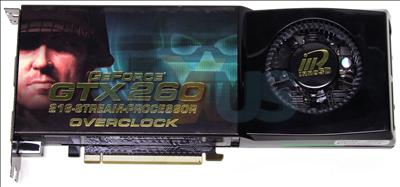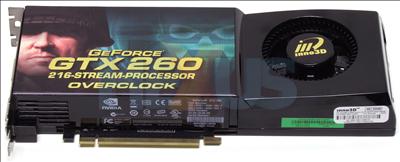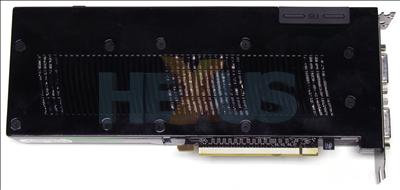Inno3D GeForce GTX 260 OC
Once again, there's little point in revisiting GeForce GT200 architecture and we'd advise interested readers to take a glance at our in-depth examination from June 2008. Remember, though, that Inno3D's GeForce GTX 260 OC is of the "new" variety, equipped with 216 shaders.
At first glance, the Inno3D GeForce GTX 260 OC looks like just about every other GTX 260 you've seen previously - bar the "overclock" branding, of course.
Putting the word into numbers, we see the card's GPU clocked at 620MHz, up from 576MHz, shader clock remains at 1,242MHz and memory frequency rises from 1,998MHz to 2,100MHz. As with GIGABYTE's Radeon HD 4870 1GB, it's power-hungry enough to necessitate two six-pin PCIe connectors.
As with most of NVIDIA partners, Inno3D has opted to stick with NVIDIA's reference cooling solution - a dual-slot design that's quiet in 2D mode and louder, albeit unintrusive, when in 3D. The fact that almost all manufacturers utilise the reference cooler is testament to NVIDIA's design.
Two SLI connectors are hidden underneath rubberised protection - allowing for three-way SLI goodness - and the card's PCB is fully enclosed inside the cooling apparatus. It's personal preference, but I tend to find that enclosed cards look a little bit more stylish than those that bare all.
As beastly as it is, it's hard to argue that enclosed cooling makes for a sleeker exterior when you view the card from the side.
No change at the rear, there's a vent for errr...venting, accompanied by the standard dual-link DVI and mini-DIN for TV-out.
Summary
On the outside, bar an additional sticker or two, there's little to note when examining Inno3D's overclocked card. Mind you, NVIDIA's reference cooling does its job well and there's little need for change, what matters here are those raised internal frequencies, so let's see if they pay dividends.














